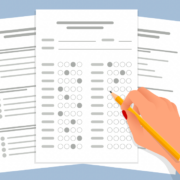Tips For Tackling An MPT Library
Tips For Tackling an MPT Library
As you approach the multistate performance test portion (MPT) of the bar exam, you may wonder how to use the MPT library. The MPT library is generally composed of cases and statutes. Occasionally, you will see secondary resources like excerpts from legislative history, journal articles, jury instructions, etc. How do you use the library? Should you read it first? If so, should you read cases first or statutes first? Here we discuss what we found works best. By having a good approach to the MPT library, you can tackle the MPT in the most efficient way possible and score high on the MPT portion of the exam!.
Tips For Tackling An MPT Library
1. Read The Task Memo First
Before we discuss whether to read the MPT library or MPT file first, remember the absolute first document you should read is the task memo. This will give you an overview of the facts as well as instructions on what you are supposed to do. This is the most important document!
2. MPT Library v. MPT File:
General Rule: Read the MPT library first if you are not sure what works best for you.
Generally, we recommend that you try it both ways – try a few MPTs. Try reading the library on some and try reading the file first on others. See what is better for you. If you do not have time to try out both ways, then you should plan on reading the library first, as this is what most students prefer after testing it out for themselves.
Exception: Read the file first if the MPT library only contains statutes.
If you get one of those rare MPTs that only contain statutes (e.g., In re Community Hospital from 2015), then it is best to read the file first. Oftentimes, the statutes are lengthy and you will not know what you are looking for if you read the library first. Thus, you will be wasting time!
3. How To Read The MPT Library
If you have cases and statutes in the library, it is best to read the cases first and then review the statutes. Generally, there will be provisions in the statutes that are not wholly relevant. So, you can save time by reading the cases first. If you have secondary resources (like journal articles, excerpts from legislative history, etc.) you should also read those before you read the library.
4. Do not brief every case.
Many students make the mistake of briefing every case that they see in the MPT library. You do not need to brief cases. Oftentimes, you will be expected to compare the facts of your case with the facts in the MPT but this is nowhere near writing a full case brief. Also, some cases are more important than others and serve different purposes. Thus, it is a costly mistake to brief every case in the library. Briefing every case in the library will cost you time, which is one of your most precious resources on the MPT!
5. Take notes on the cases.
Instead of briefing every case, you can jot down notes, or underline or highlight relevant facts or excerpts.Many students find it helpful to even type notes, so they can begin working right away. That way, you can still do some active work while you read the library, but you don’t waste any time.
By having a tailored approach to the MPT library, you will be able to save time, work efficiently, and write a stellar MPT answer.
Need Expert MPT Guidance?
🔥 Top-Rated MPT Resources
- New MPT One-Sheets: Discover crucial formats and tips distilled to simplicity.
- MPT Private Tutoring: Opt for personalized strategies and guidance to elevate your preparation.
- Bar Exam Crash Course and Mini Outlines: Gain a comprehensive understanding of the big picture.
- MPT Mastery Class: Deepen your understanding and skills for MPT excellence.
- Comprehensive MPT Guide: Navigate the MPT process with our step-by-step guide.
- Targeted MPT Feedback: Refine your approach with structural and organizational insights.
- Real MPT Questions Compilation (2000 to present): Engage in hands-on practice to enhance your readiness.
Plus, don’t miss our Free Bar Exam Resource Center filled with our top free resources and expert insights!






Leave a Reply
Want to join the discussion?Feel free to contribute!